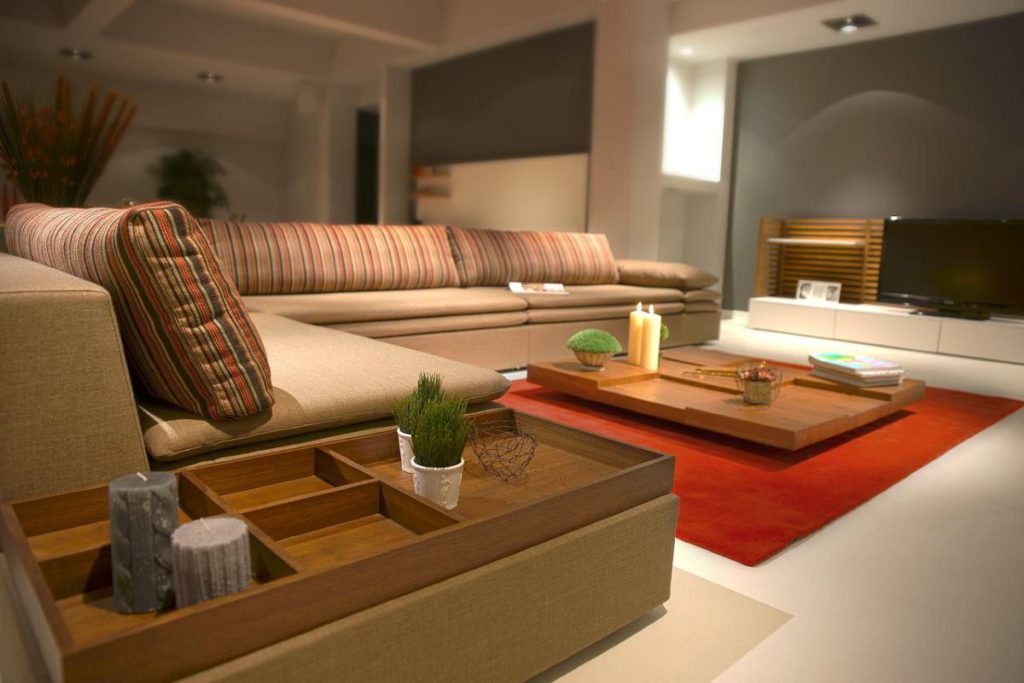Life really is made better with such a variety of colours surrounding us. How many times have you heard people expressing sympathy for their four-legged canine friend who hasn’t got the same colourful view of the world? And honestly, who could blame them? So much of our self-expression and life experiences are linked with the colours that surround us. So, it should come as no surprise to hear just how much they can impact and even influence your mood.
No doubt you’ve heard the terms primary colours, colour wheel and complementary colours – it probably takes you back to your high school art class days. You’ll have a basic understanding of how some colours go well together, and some don’t. And sure, some of this is up to tastes and preferences, but generally speaking, there is a science behind it. This essentially means that the grouping of certain colours can either please or displease us based on how they look. While a lot of this is based on hue or shade as opposed to colour itself, it is an accepted rule that if one colour is opposite to another on the colour wheel, it’s going to be pleasing to the human eye.

Colour often has a big impact on our choices about what we consume. This ranges from the colours we include in our wardrobe to the colour we choose to paint our dartboard cabinet or even the pool table accessories we prefer. Alongside the advertisements for home office chairs and a wooden floor cleaner, you’ll find plenty of videos telling you what colour scheme will best suit your skin tone and body type. When we set out to buy a new phone or a new car, we are, of course, going to be influenced by the colour options. It’s pretty safe to say we have all made a final decision based on colour at some point or another.
As evidenced through the connotations and associations linked with different colours, it’s a well-known fact that colours heavily impact our moods. Studies in colour psychology have shown a number of different ways we can use colours to better express and understand our emotions. These impacts are not always simple and often change depending on shades and pairings. It’s widely acknowledged that colours from the red spectrum (reds, oranges and yellows) are considered to be warm colours. While they have the potential to evoke warmth and liveliness, they are also regularly associated with feelings of anger and hostility. Similarly, on the other end of the spectrum, we have blue colours (blues, purples and greens), typically known to be cooling and calming colours that leave a person relaxed and at peace and are also linked with feelings of sadness, isolation and indifference. Within these colour ranges, each of the individual colours will often have a feeling or vibration that is commonly associated with them. For example:
– Red: often associated with excitement, love, strength and heat
– Orange: linked with feelings of confidence, successfulness and bravery
– Yellow: happiness, warmth, and creativity
– Green: healing/health and freshness or freedom
– Blue: peace, trustworthiness, and calm
– Pink: compassion, youthfulness, and sensitivity
– Purple: wealth/status, sophistication or ambition
– Black: Formality, secrecy or reservation
– White: cleanliness, innocence and honesty
Many countries around the world recognise the healing properties and connections between colours. The Chakra System, originating in India between 1500BC and 500BC, recognises a series of energy points throughout the body. Each of these points is believed to have many different connections related to the body and mind/spirit. Each of these points is also allocated a colour to coincide. It is understood that this colour can be used to help balance the associated point within the body, whether that is through meditation, surroundings, or even wearing it as clothing. Similar practices can be found in the western world, too; when conducting clinical trials, researchers have discovered a link between the colour of the pill and its impact on the test subject. A warmer coloured (red, orange, yellow) placebo pill has been found to have a higher impact than when it is a cooler colour (blue, green, purple).
There are many other ways that society has recognised that colours will influence and impact people’s decision-making or moods. No doubt you’re already aware of the use of a red and yellow combination to stimulate hunger. This is why we see so many fast-food signs made up of reds and yellows. Other examples of the influence of colour in society include:
– Blue-coloured streetlights are thought to reduce the crime rates in their vicinity.
– Black uniforms are believed to receive more penalties for sporting teams as well as attract more negative attention.
– Red coloured objects are known to cause a person to respond with greater speed or force. Interesting, given that red typically means stop in the cases of road signs and traffic lights.
When thinking of how to decorate our homes, we often consider the colour schemes we use. This is indirectly linked to the impact our colour choices can have on our moods. There’s a good reason our walls are often white over black, and it’s not just brightness. Lighter colours and shades are able to give the perception of a bigger room, whereas darker ones can make a space feel smaller or more enclosed. Similarly, people are more inclined to opt for a lighter wood colour for their floor, furniture or timber cladding – spoiler, it’s not a cheaper wood stain. Studies have indicated that darker colours of wood can increase anxiety and depression, while their lighter counterparts instil feelings of comfort, cosiness and peace. It’s recommended when choosing colours for furniture and walls for certain rooms to take into consideration the colour for the atmosphere you’re hoping to create. So, if you’re looking to install a home office (as so many of us are, thanks to Covid), then don’t limit your online search to office chairs in Australia; look into what colours are best for productivity. The results might even surprise you.
Next time you find yourself in an unexpected mood, perhaps take in your surroundings. Could something around you be causing it? Or better yet, can you use colour therapy to help alleviate some of the discomforts? You just might be surprised how often your mood is impacted by the colours of your environment.
